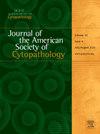Analysis of 2023 cytologists employment survey
Q2 Medicine
Journal of the American Society of Cytopathology
Pub Date : 2025-03-01
DOI:10.1016/j.jasc.2024.12.004
引用次数: 0
Abstract
Introduction
To provide clinical cytopathology laboratories and educational cytology programs with a snapshot of the current state of the cytology profession, including wages, anticipated retirement statistics and scope of practice in the field.
Materials and methods
This survey was a collaborative initiative disseminated to the membership of the American Society for Cytotechnologists (ASCT) and the American Society for Clinical Pathology cytologists. Data collected from respondents via SurveyMonkey was collated and analyzed by the ASCT and the American Society for Clinical Pathology.
Results
Five hundred and seven responses were received and tabulated based on ASCT region and states. Position titles, salaries, employment demographics, years employed, anticipated retirement rates and reasons for leaving the profession were evaluated. Information regarding scope of practice and/or ancillary duties received from the ASCT and American Society for Clinical Pathology cytologists was also collated.
Conclusions
While anticipated retirement rates are comparable to those reported over the past several years, staffing shortages will be exacerbated due to cytologists leaving the field for a variety of reasons. Cytologists continue to evolve with the field of diagnostic cytology and qualitative feedback suggests that learning opportunities to facilitate career advancement and mitigate burnout would be valuable.
2023年细胞学家就业调查分析。
简介:为临床细胞病理学实验室和细胞学教育项目提供细胞学专业现状的快照,包括工资,预期退休统计和该领域的实践范围。方法:这项调查是由美国细胞技术学会(ASCT)和美国临床病理细胞学学会的成员共同发起的。通过SurveyMonkey从受访者收集的数据由ASCT和美国临床病理学会整理和分析。结果:根据ASCT地区和州,收到了557份回复并将其制成表格。评估了职位名称、工资、就业人口统计、工作年限、预期退休率和离职原因。从ASCT和美国临床病理细胞学家协会收到的关于执业范围和/或辅助职责的信息也进行了整理。结论:虽然预期的退休率与过去几年的报告相当,但由于各种原因细胞学家离开该领域,人员短缺将加剧。细胞学家随着诊断细胞学领域的不断发展和定性反馈表明,促进职业发展和减轻职业倦怠的学习机会将是有价值的。
本文章由计算机程序翻译,如有差异,请以英文原文为准。
求助全文
约1分钟内获得全文
求助全文
来源期刊

Journal of the American Society of Cytopathology
Medicine-Pathology and Forensic Medicine
CiteScore
4.30
自引率
0.00%
发文量
226
审稿时长
40 days
 求助内容:
求助内容: 应助结果提醒方式:
应助结果提醒方式:


